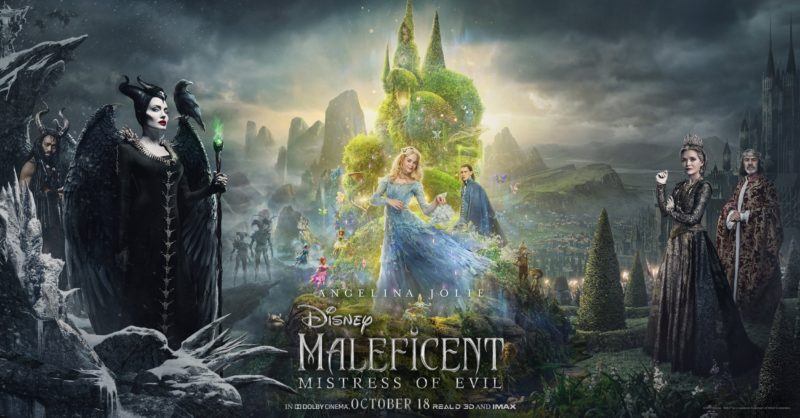Fear, Tyranny, and the Fairy Tale of Our Times

Fairy tales often get a bad rap. Among politicians and activists, “fairy tale” connotes “fantasy,” as in Greta Thunberg’s rant at the U.N. Climate Action Summit: “We are in the beginning of a mass extinction, and all you can talk about is money and fairy tales of eternal economic growth.”
Yet fairy tales not only promise the hope that Thunberg rejects: they register each culture’s sociopolitical concerns, offering moral and practical solutions.
Consider Charles Perrault’s 1697 tale of “Little Thumbling,” which depicts the poverty of French peasants, the greed of the rising moneyed class (the ogre), and the corruption of the court. For the little man, only cunning can save the day.
Or recall Jacob and Wilhelm Grimm, who collected and reshaped fairy tales during the Napoleonic wars, defiantly presenting a German tradition (take that, Boney). And in the twentieth century, the Nazis revised the Grimms’ classics to spread their own propaganda. In one chilling film, Little Red is saved from the wolf by an SS officer.
Which brings us to one of Disney’s latest releases: Maleficent: Mistress of Evil (2019). As critics have observed, it seems overloaded with themes and subplots, from genocide to environmentalism to the history of the dark fey.
Technically, it is not a great film.
Yet Maleficent: Mistress of Evil performs an essential service by reflecting our time: it foregrounds how fake news promotes our national divisions, and it models how to reject bias in favor of facts, moral judgment, and the prosperity brought by peace.
Spinning Stories: #MaleficentIsEvil
Disney is of course an expert at updating and promoting scripts. Maleficent (2014) retells its own Sleeping Beauty (1959), itself based on the Grimms’ variant, though Disney identified Perrault’s version as its source text. No need to remind viewers of the Germans so soon after World War II.
Maleficent then recuperates the villain as the victim of a man who literally stole her fairy wings. In retaliation, Maleficent cursed his daughter, Princess Aurora, to be poisoned by a spindle, but then redeemed herself by growing to love the child. That film ended with Maleficent, not Prince Phillip, awakening Aurora with “true love’s kiss.”
So why is the sequel’s subtitle Mistress of Evil? It is a puzzle that the narrator foregrounds at the start, noting that Maleficent’s love for Aurora “was somehow mysteriously forgotten. For as the tale was told over and again throughout the kingdom, Maleficent became the villain once more.”
To paraphrase one politician, everybody says so.
The mystery is solved near the film’s end, when Prince Phillip’s mother, Queen Ingrith, tells Aurora that it was she who spread the lies:
Do you know what makes a great leader, Aurora? The ability to instill fear in your subjects and then use that fear against your enemies. So I spread this story of the evil witch and the princess she cursed. It didn’t matter who woke Sleeping Beauty. They were all terrified. And the story became legend.
To be fair, Ingrith believes that fairies like Maleficent threaten humanity. She claims that when she was young, the crops in her father’s kingdom died, leading the people to suffer. Meanwhile, the magical fey of the Moors continued to thrive.
“My brother and I believed we should take what we needed,” Ingrith states, echoing modern rationales for the redistribution of wealth. Why create when one can simply take? Did the fairies really deserve what they had? But her father, the king, disagreed, sending Ingrith’s brother to ask the fey’s help. He never returned.
In this context, Queen Ingrith’s tales about Maleficent and other fairies may be factually incorrect, but she believes them to be morally true, which is apparently the new standard in journalism. And so she spins her stories with an effectiveness that even Walter Duranty would envy.
To solidify her narrative, Queen Ingrith stages a family dinner for the newly engaged Aurora and Phillip. First she antagonizes Maleficent, working her into a rage. Then Ingrith poisons her own husband with the iconic spindle and frames Maleficent for it. Even Aurora falls for the lie. The people, terrified, are primed for war.
Pick Your Poison
As Maleficent leaves Queen Ingrith’s castle, she is shot with a poisoned bullet by one of Ingrith’s servants, Gerda. Fortuitously, a mysterious fairy rescues her and takes her to a remote location to heal. When Maleficent awakens, she discovers a world of Dark Fey who have been exiled from their lands by humans.
As Maleficent navigates this new realm, she is pulled in different directions by two fairies. One, the warrior Borra, is motivated by resentment: they must kill the humans and reclaim their lands. Another fairy, the peaceful Conall, points a different way: Maleficent, the descendant of the Phoenix, possesses great powers that could be used to heal, not destroy, if she can forgive Aurora.
The characters’ options mirror our own. Do we focus on the past and continue the resentments? Do we, like one prominent activist, threaten that if demands are not met, “we will burn down this system and replace it?” Or do we unite to move forward?
The question involves not only politics but moral judgment. As Adam Smith observes in The Theory of Moral Sentiments, “The real, revered, and impartial spectator . . . is upon no occasion, at a greater distance than amidst the violence and rage of contending parties. . . . Of all the corrupters of moral sentiments, therefore, faction and fanaticism have always been by far the greatest.”
Even as Maleficent struggles with judgment, Aurora, now at the palace for her wedding, comes to suspect that she has condemned Maleficent unfairly. She finally realizes that Ingrith plans to exterminate the fey. She warns Prince Phillip and saves a group of fairies being exterminated by Gerda.
Waking Up
In the end, it comes down to individual choice. Borra and Ingrith, driven by revenge, choose to lead their armies into battle. Ingrith warns Phillip, “These creatures stand between us and everything we need to survive.” Her solution is to destroy.
Phillip rejects her logic, telling Borra, “My mother wanted a fight, and you’re giving it to her. I won’t allow her hatred to ruin my kingdom or yours.” His argument leads Borra to awaken from his own hatred to consider who is driving the war and why.
Maleficent goes a step further. She dies to save Aurora when Ingrith shoots her with a poisonous bolt. Her love trumps race, politics, and resentment for past wrongs. And because Maleficent is a descendant of the Phoenix, she regenerates.
At first glance, the Phoenix motif seems like a sadly artificial solution, but it follows a tradition of fairy tales depicting symbolic rebirth to capture a character’s growth in wisdom. Snow White is “reborn” after her time in the coffin; Little Red is “reborn” after her time in the wolf’s belly; and Maleficent is “reborn” after her sacrifice.
The result is hope that what was imperfect—a person, a relationship, a country—can be made better. The film ends with humans and fairies celebrating the marriage of Philip and Aurora. While negotiations are surely ahead, the first step has been taken toward peace and the prosperity brought by mutual exchange.
Ultimately, Maleficent: Mistress of Evil is a fairy tale of our time. Reflecting the national divisions that have only escalated since its release, it illustrates how false stories spread to infect hearts and minds as fatally as a virus. The solution is to reject these fictions and judge for ourselves. As Conall tells Maleficent, “I’ve made my choice. Now make yours.”









